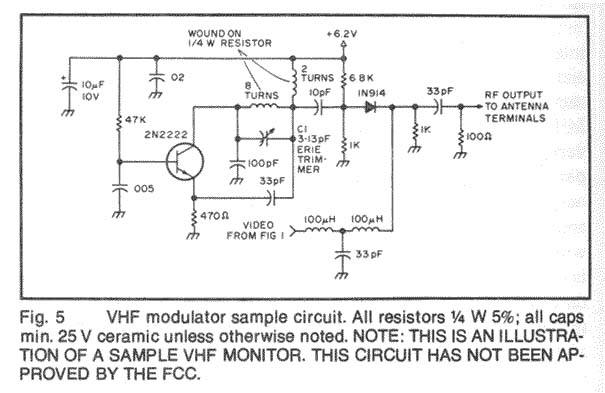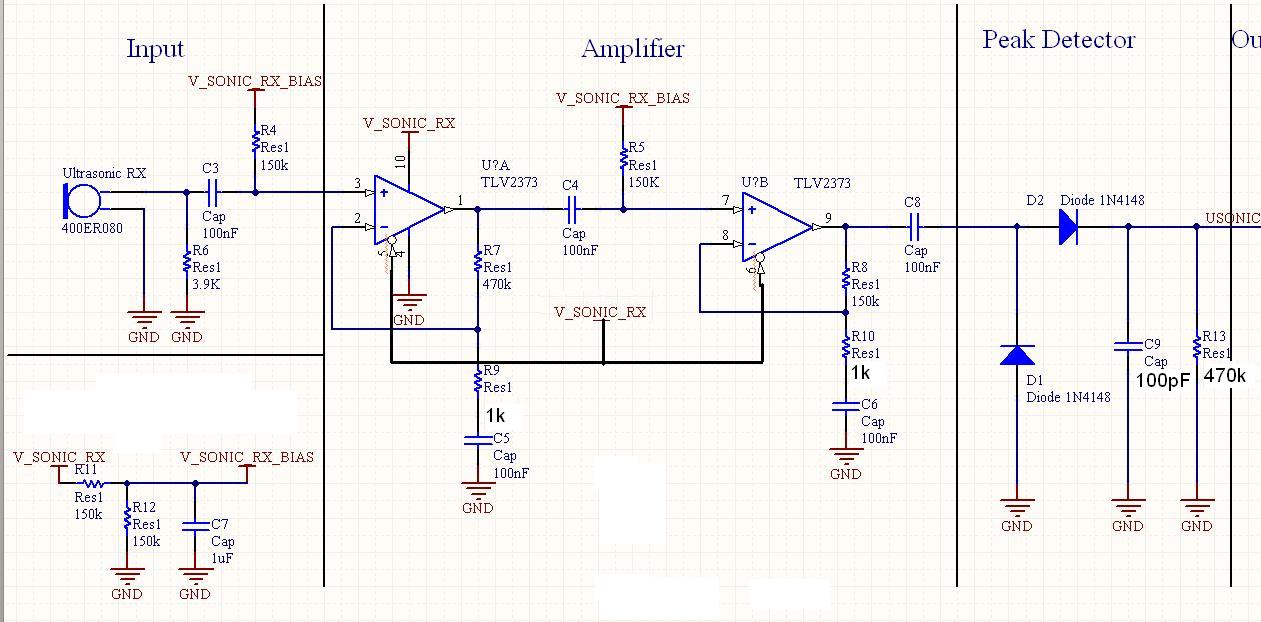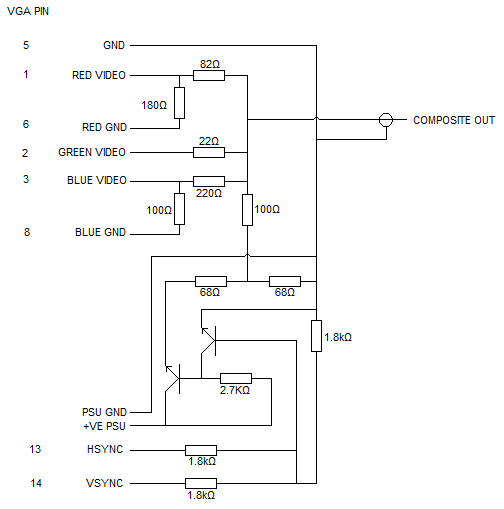
Video Amplifiers for the Mirror Screw

The light sources for mirror screws consist of a dozen or more high-brightness LEDs, available in various colors or white, typically connected in parallel or series-parallel configurations. Two amplifiers are shown, capable of handling the full range of video frequencies for up to 40 LEDs in different series/parallel setups. The upper circuit was developed by Peter Smith of Scotland, a member of the NBTVA, and has been successfully utilized by many members of the association. In its original design, the circuit could separate sync pulses from video signals; however, in the current method of operation, sync is not required, and the associated components have been removed. Club members can purchase printed circuit boards for Peter Smith's amplifier at a very low cost. The lower portion of the schematic features an amplifier developed independently, which utilizes an operational amplifier capable of providing up to 3 amperes of output across a wide frequency range. This amplifier has been successfully used multiple times, supporting as many as 36 LEDs. Both amplifiers require a positive DC power supply of 12 to 18 volts. Peter Smith's circuit operates on a single supply, while the independently developed amplifier necessitates a second negative 5-volt supply. The power supply used produces positive 15 volts at a peak current of 3 amperes and negative 5 volts at 1 ampere.
The circuit design for the LED light sources incorporates high-brightness LEDs arranged in parallel or series-parallel configurations to enhance brightness and uniformity. The upper amplifier circuit, designed by Peter Smith, leverages a robust architecture capable of handling video frequencies, which is essential when driving multiple LEDs. This amplifier's ability to separate sync pulses adds versatility, although this feature has been omitted in the current application to streamline the design.
The lower amplifier, featuring an operational amplifier, is engineered to deliver significant output current while maintaining a wide frequency response. This design is particularly advantageous for applications requiring high power, such as driving multiple LEDs simultaneously. The operational amplifier is configured to ensure stability and efficiency, providing up to 3 amperes, which is crucial for applications involving 36 LEDs.
Power supply considerations are critical in this design. The requirement for a 12 to 18-volt positive DC supply ensures that both amplifiers operate efficiently, with Peter Smith's circuit functioning on a single supply, thus simplifying the overall design. In contrast, the operational amplifier necessitates a negative supply, which is a common practice in high-performance circuits to maintain operational stability and reduce noise.
The use of a power supply that delivers 15 volts at 3 amperes and -5 volts at 1 ampere is indicative of a well-designed system capable of meeting the demands of the LEDs while ensuring reliable operation. This configuration allows for flexibility in application, catering to various setups and requirements in LED lighting solutions.
Overall, the schematic illustrates a well-thought-out approach to driving high-brightness LEDs, combining proven designs with modern enhancements to meet the needs of users within the NBTVA and beyond.The light sources for mirror screws based on my work, consist of a dozen or more of high brightness LEDs, in colors or white, typically connected in parallel or series-parallel. Shown here are two amplifiers, capable of handling the full range of video frequencies for as many as 40 LEDs in various series/parallel hook-ups.
The upper circuit is one developed by Peter Smith of Scotland, member of the NBTVA and has been well proven by the successful use by of many of the members in the NBTVA. In its original form, the circuit could also separate sync pulses from the video signals. In my method of operation however, sync is not required, so those associated components have been removed.
Club members are able to purchase printed circuit boards for Peter Smith`s amplifier at very low cost. The amplifier in the lower portion of this schematic is one I developed that uses an operational amplifier capable of providing up to 3 amperes output along with a wide frequency range.
I have actually used this amplifier successfully more than a dozen times and for as many as 36 LEDs. Both of these amplifiers require a 12 to 18 volt positive DC power supply. A single supply works on Peter Smith`s circuit, whereas my amplifer requires a second negative 5 volt supply. The power supply that I use produces positve 15 volts at a relatively high current of. 3 amperes peak. It also provides a negative 5 volts at. 1 amperes. (PY) 🔗 External reference
The circuit design for the LED light sources incorporates high-brightness LEDs arranged in parallel or series-parallel configurations to enhance brightness and uniformity. The upper amplifier circuit, designed by Peter Smith, leverages a robust architecture capable of handling video frequencies, which is essential when driving multiple LEDs. This amplifier's ability to separate sync pulses adds versatility, although this feature has been omitted in the current application to streamline the design.
The lower amplifier, featuring an operational amplifier, is engineered to deliver significant output current while maintaining a wide frequency response. This design is particularly advantageous for applications requiring high power, such as driving multiple LEDs simultaneously. The operational amplifier is configured to ensure stability and efficiency, providing up to 3 amperes, which is crucial for applications involving 36 LEDs.
Power supply considerations are critical in this design. The requirement for a 12 to 18-volt positive DC supply ensures that both amplifiers operate efficiently, with Peter Smith's circuit functioning on a single supply, thus simplifying the overall design. In contrast, the operational amplifier necessitates a negative supply, which is a common practice in high-performance circuits to maintain operational stability and reduce noise.
The use of a power supply that delivers 15 volts at 3 amperes and -5 volts at 1 ampere is indicative of a well-designed system capable of meeting the demands of the LEDs while ensuring reliable operation. This configuration allows for flexibility in application, catering to various setups and requirements in LED lighting solutions.
Overall, the schematic illustrates a well-thought-out approach to driving high-brightness LEDs, combining proven designs with modern enhancements to meet the needs of users within the NBTVA and beyond.The light sources for mirror screws based on my work, consist of a dozen or more of high brightness LEDs, in colors or white, typically connected in parallel or series-parallel. Shown here are two amplifiers, capable of handling the full range of video frequencies for as many as 40 LEDs in various series/parallel hook-ups.
The upper circuit is one developed by Peter Smith of Scotland, member of the NBTVA and has been well proven by the successful use by of many of the members in the NBTVA. In its original form, the circuit could also separate sync pulses from the video signals. In my method of operation however, sync is not required, so those associated components have been removed.
Club members are able to purchase printed circuit boards for Peter Smith`s amplifier at very low cost. The amplifier in the lower portion of this schematic is one I developed that uses an operational amplifier capable of providing up to 3 amperes output along with a wide frequency range.
I have actually used this amplifier successfully more than a dozen times and for as many as 36 LEDs. Both of these amplifiers require a 12 to 18 volt positive DC power supply. A single supply works on Peter Smith`s circuit, whereas my amplifer requires a second negative 5 volt supply. The power supply that I use produces positve 15 volts at a relatively high current of. 3 amperes peak. It also provides a negative 5 volts at. 1 amperes. (PY) 🔗 External reference





